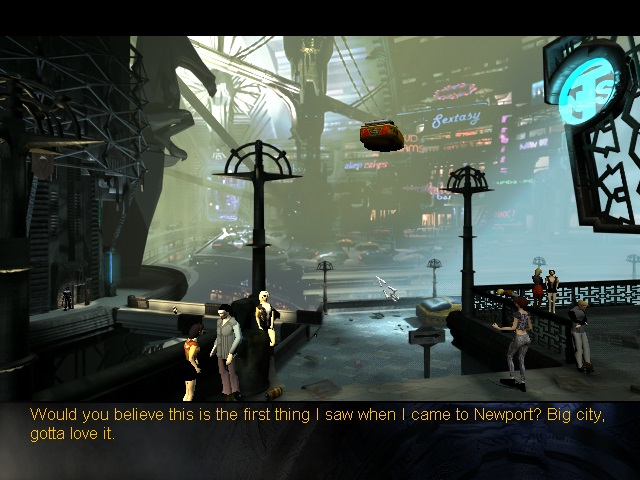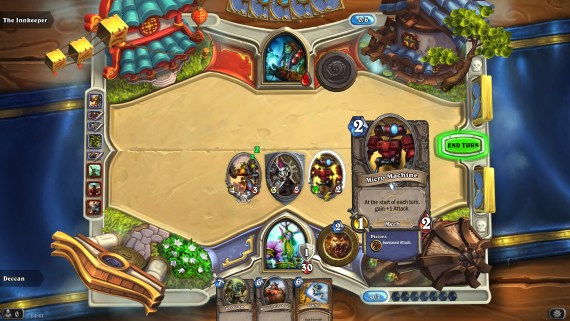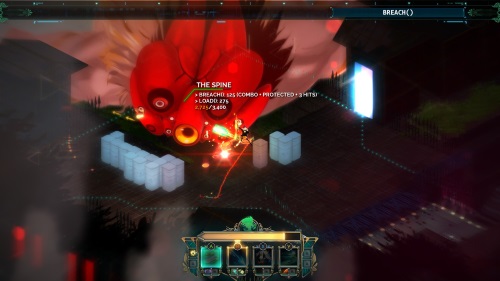Despite hearing lots of praise for it, I’d skipped out on Bastion, thinking that it looked too lightweight. Supergiant’s follow-up, Transistor, was an even bigger success. It has a cool female protagonist, an awesome, nigh infinitely-configurable weapon and an original science-fiction world.
Category Archives: Games
BioShock Infinite DLCs
So I finally got my GPU back. Actually, MSI said my GTX 770 couldn’t be fixed and instead offered an upgrade to a GTX 970 for a small fee which I quickly accepted. Since I’d been working my way through all of the BioShock Infinite DLCs even my GPU conked out, so I went back to that.
The Longest Journey

With still no GPU fit for modern games, I’ve started knocking items off of my list of old games that I’d always wished I’d played. This starts with The Longest Journey, one of the most highly praised adventure games of all time and one that has gained renewed prominence recently due to its female protagonist and the KickStarter campaign to fund a sequel.
Hearthstone

(Since I don’t play boardgames any more, I make too few posts about games to really justify maintaining a separate blog for them, so I’m moving those posts back here. This blog has more subscribers anyway, though more people tend to randomly wander into the games blog. I’m still maintaining as an archive of course.)
As you can no doubt see, my GPU is still MIA so I’ve latched on to yet another card game to fill my time. I’ve held off playing Hearthstone for the longest time because it’s a mainly online game against other human opponents and I just don’t do multiplayer. But I’ve been pleasantly surprised by how smooth and drama-free the experience has been. I’ll start with comments on the game design and move on to the online experience in a later post.
Red Faction: Guerrilla
Most shooters start the player off with some kind of assault rifle, maybe a sub-machine gun if the designers are feeling stingy, plus a dinky little side-arm that never actually sees any use. Not so Red Faction: Guerrilla. In this game, right after the introductory cutscene, you’re given a humongous sledgehammer and a satchel of remote-detonated explosives. Then you’re set loose on the Martian landscape to do as you will. That is a fair representation of this game is all about.
You’ll find that most of your time on Mars will be spent wrecking stuff. Of the two starter weapons, the sledgehammer is the more reliable but it’s always satisfying to bring down a building with lots of enemies inside with explosives, especially when you become skilled at identifying structurally weak spots to slap them on. But that’s just the tip of the iceberg that is your arsenal. You also get the grinder, a bulky machine that fires razor-edged metal disks, the thermobaric rocket launcher that is really good at filling an enclosed space with a big explosion, a nano-rifle which infects the target with nanites that dissolve it, and, if you’re lucky, the awe-inspiring singularity bomb, which creates a miniature black hole.
Dominion Cardgame
Ever since I first learned to play Magic: The Gathering more than ten years ago, I’ve been a big fan of card-based games. Using cards allows games to get away with a relatively simple core ruleset while adding additional rules and exceptions to the established rules as needed on the cards themselves. This means that while a good player will need to have knowledge of all of the cards and their possible effects, a beginner can start with just the core rules and add to his or her knowledge by reading the cards as they’re played. With a large enough library of cards, you get unparalleled dynamism from all the different card interactions, including many even the original designers didn’t predict, and hence a continuously fresh experience.
One of the things that I’ve always admired about Magic is the abundance of what I like to call meta-cards in the game. Most of the cards in Magic represent summonable creatures, castable sorceries, forgeable artifacts and all of the other accouterments that one would expect in a game depicting a duel between powerful mages, but the meta-cards are none of these. Instead, these cards have effects that manipulate the deck itself, allowing the user to among other things, draw additional cards, retrieve cards that have been discarded, and even go looking into their library for specific cards to put into their hand.
Weaver of tales
CarcaSean received a shipment of new games last week so everyone was eager to try them out. Of these, Heroscape: Rise of the Valkyrie was easily the most visually impressive with its Lego-like terrain pieces and pre-painted miniatures. The most unusual however was the new edition of Tales of the Arabian Nights which is barely a game at all and can be best described as a more advanced version of the old Choose-Your-Own-Adventure books. Each player takes the role of one of the famous characters from the stories from One Thousand and One Nights and sets off on a grand adventure. The point of the game is not to win per se, but to see what crazy scrapes you get into.
As a game that’s all about telling stories, there’s little in the way of rules. There are no statistics for the characters for example and everyone starts the same except for gender. Everyone does choose three skills to start the game with but that’s pretty much it in terms of differentiation. Victory is determined by collecting Destiny and Story Points over the course of the game and a neat little twist is that each player can secretly decide how many of each they need to win before the game begins, so long as they add up together to 20 points. Due to the randomness and unpredictability of the game however, this is obviously meant more to give an ending to the game rather than awarding victory to a player in the traditional sense.

